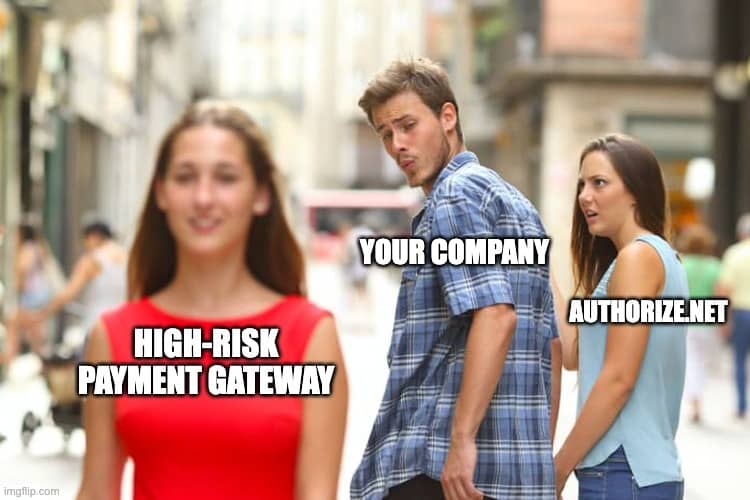Why Ecommerce Merchants Should Consider Merchant Accounts That Are Less Risky

Traditional payment methods have been the backbone of ecommerce for years. However, due to the rise of alternative payment methods, including credit cards and bank accounts, this has become more challenging. With risks and fees increasing with each passing day, ecommerce platforms are turning to less risky options of accepting payments from both buyers and sellers. These safer payment methods include virtual terminal (Visa Checkout), ACH bank transfers, or even postal money orders as a secondary option. Merchant accounts help ecommerce merchants accept payments from customers without exposing them to risk. Here’s why you should consider signing up for such an account instead of staying with traditional payment methods.
Faster Delivery
When you accept credit cards, your money typically takes three to five business days to be deposited into your account. With a merchant account, however, you can receive money in as little as one to two business days. This faster deposit time is a huge benefit for ecommerce merchants since it results in faster delivery of products and services that buyers have ordered.
Reduced Fraud Risk
By accepting a payment processing account, you reduce the risk of fraud. Fraud can be caused by card skimming, fake cards and more. Merchants usually plan for and mitigate the potential risks that come with fraud by using a merchant account that doesn’t expose them to those risks. This is also beneficial for customers as well. When transactions are processed through a third-party service like PayPal or Stripe, the customer isn’t exposed to risk. This means they won’t have to worry about their information being lost or stolen during the transaction.
Fewer Hassles to Customers
If you’re selling online, then accepting payments from your customers is a must. With traditional payment methods, there are many hoops to jump through before you can actually collect the money from your customers. This includes jumping through hoops of paperwork and waiting for payment to be processed. But with merchant accounts, there are fewer hurdles for buyers and sellers to go through. Merchant accounts streamline this process by allowing buyers to pay on their credit cards or bank accounts without the need for any additional steps. There are less hoops to jump through with merchant accounts; it’s easier for buyers and sellers alike to accept payments without having to worry about any extra hassles.
Higher Profits For Merchants
The first reason ecommerce merchants should consider signing up for a merchant account is that they will see higher profits. With the increased risk of accepting credit cards, merchants are turning to less risky options of accepting payments. These safer payment methods include virtual terminal (Visa Checkout), ACH bank transfers, or even postal money orders as a secondary option. With these methods, merchants can see higher profits because they are not as exposed to risk. This means that merchants will be able to accept more customers on their platform and make more money than ever before.
Improve Branding and SEO
You wouldn’t have a business without customers, so improving your brand and search engine optimization (SEO) is key. By signing up for a merchant account, you’re able to accept payments from customers in multiple ways. This is great for your brand because you’ll reach more people than ever before and improve your SEO by being able to track conversions much easier. In addition, you’ll be able to better monitor the status of your payment operations. You won’t need to worry about anything but growing your business because the merchant account will take care of the rest.
Other Benefits Of A Merchant Account
Merchant accounts offer other benefits that are not always seen by ecommerce merchants, including credit card fraud protection and monitoring. Merchants can also take advantage of the increased security offered by these accounts. Additionally, Visa Checkout is a safer option because it’s protected by Visa, which means counterfeiters won’t work to steal your information. But if you still want to accept credit cards or bank transfers, there are other options available as well, including virtual terminal and ACH bank transfers.
Should You Have A Merchant Account?
Merchant accounts are an important tool for ecommerce merchants. They help to mitigate the risk of accepting payments and are an attractive option for people who want a less risky way to accept payments from customers than traditional methods like credit cards. But as payment options evolve, you should consider whether it’s worth staying with a traditional method or switching over to one of these safe options. Here are some key benefits of considering merchant accounts:
FAQ’s
What is virtual terminal?
Virtual terminal is an electronic payments system created by Visa and operated by their network of financial institutions, that allows a merchant to accept credit and debit cards for payment directly from a customer.
Virtual terminal can be used with credit cards or debit cards that are connected to a Visa account (Visa accounts include consumer or small-business accounts, as well as merchant accounts). Credit cards through virtual terminal can be used anywhere Visa cards are accepted, including online and in-store purchases at more than 40 million merchants worldwide.
To use virtual terminal, a merchant must have a merchant account with a payment processor that is approved for virtual terminal. With virtual terminal, the amount charged to the card is based on the card’s purchase value plus an additional transaction fee.
What is ACH bank transfer?
ACH (Automated Clearing House) is a process that banks use to clear and settle credit and debit transactions. These are electronic funds transfers between accounts held at the same financial institution. Typically, the ACH transfer of funds between two accounts at two different banks occurs automatically, without the involvement of a third party.
ACH transfers allow for payments to be made quickly and directly without the delays involved in manually processing checks or credit card payments. According to Stripe, “The speed and convenience of ACH make it an excellent choice for most payments.”
In ecommerce, ACH transfers can help reduce the amount of time between when a product is ordered and when it can be delivered. They are also faster than credit card or electronic funds transfers, as they are processed directly by the banks.
What is postal money order?
A postal money order is a form of payment that allows you to send money directly to another person or business. It is used primarily for payments between businesses. The process for sending payments with a postal money order is as follows: 1. The buyer fills out the correct paperwork and mails it to the recipient. 2. The recipient signs and scans the digital image of the money order. This verifies that the payment was received correctly. 3. The digital image of the money order is then printed, packaged, and sent through slower and more expensive postal routes. The turnaround time on this type of payment is typically 3-5 business days, while the average delivery time is 7-12 business days depending on location and United States Postal Service (USPS) service availability in your area.
Read Next

Find out whether Authorize.Net works for high risk merchants, what restrictions you might face and how to get approved.

Get expert advice on selling CBD products on Shopify, including compliance tips and setting up secure payment options.

Find out why Square may deactivate merchant accounts and steps to resolve issues and maintain uninterrupted payment services.
Need a High-Risk Merchant Account?
Disruption-free payment processing at the best price for your situation, guaranteed.
Get Free Guidance Now!